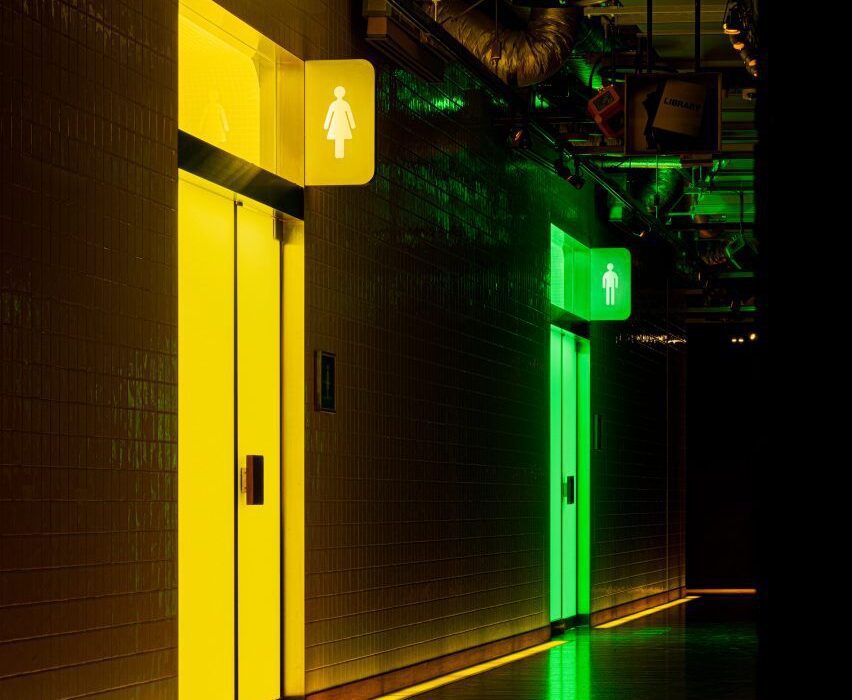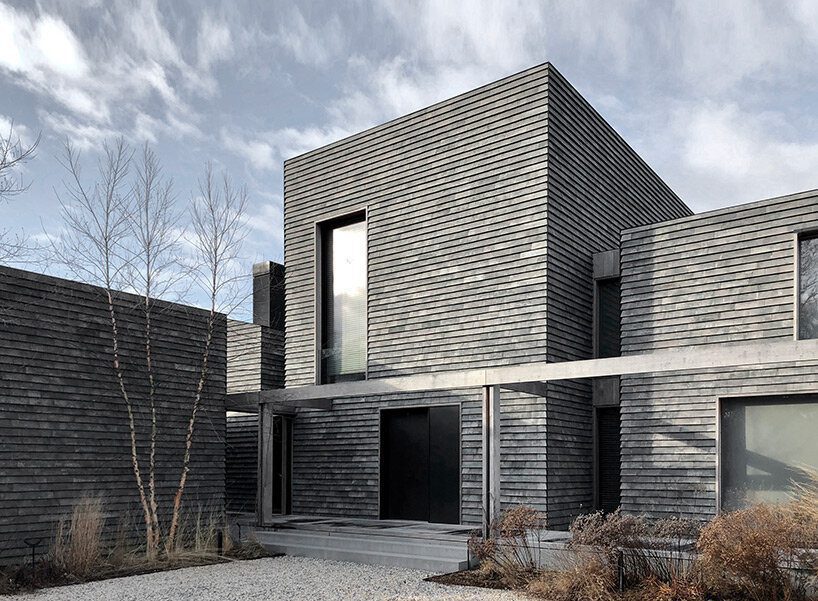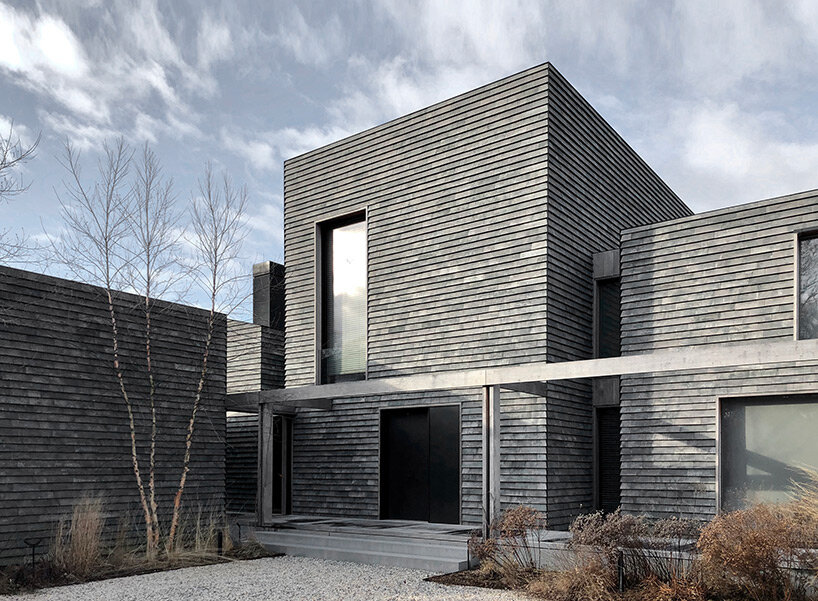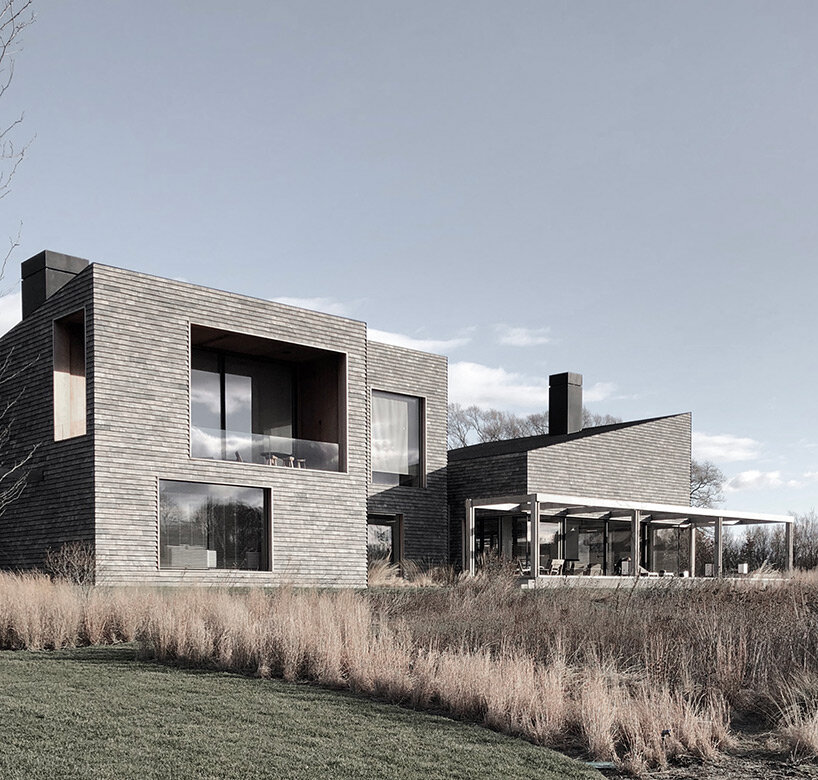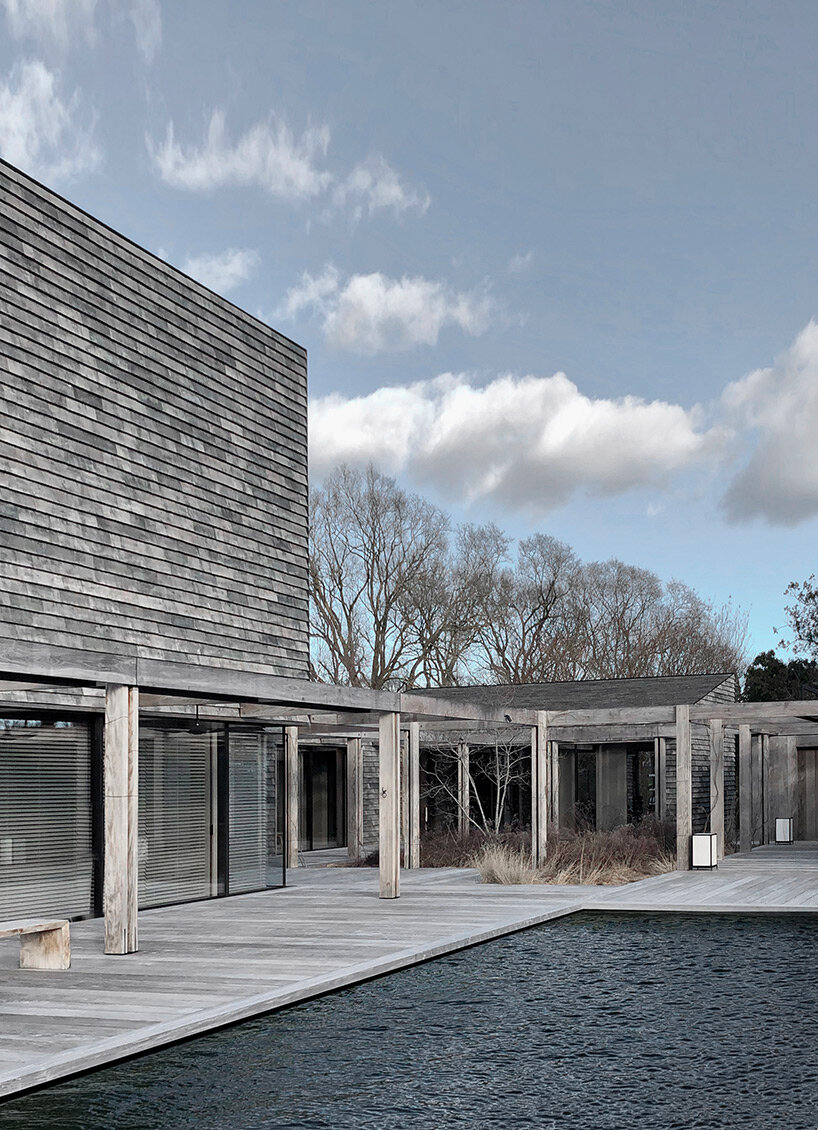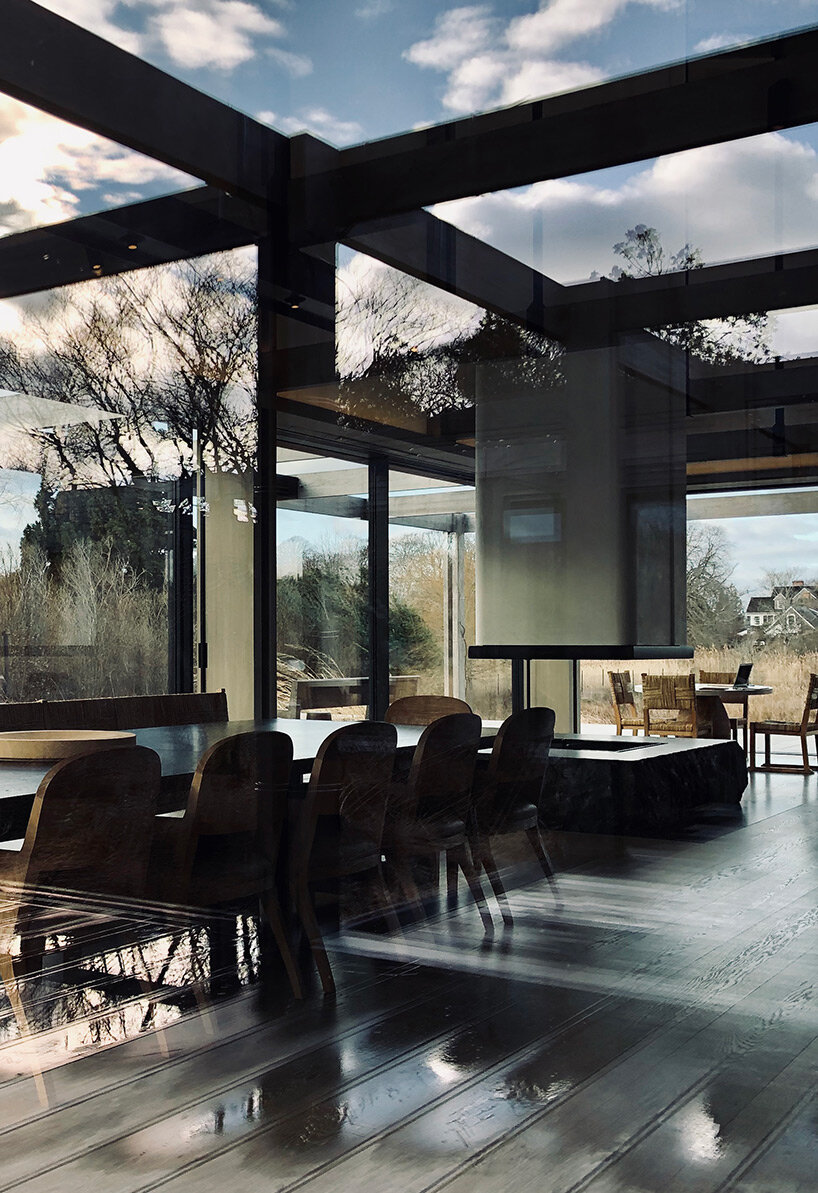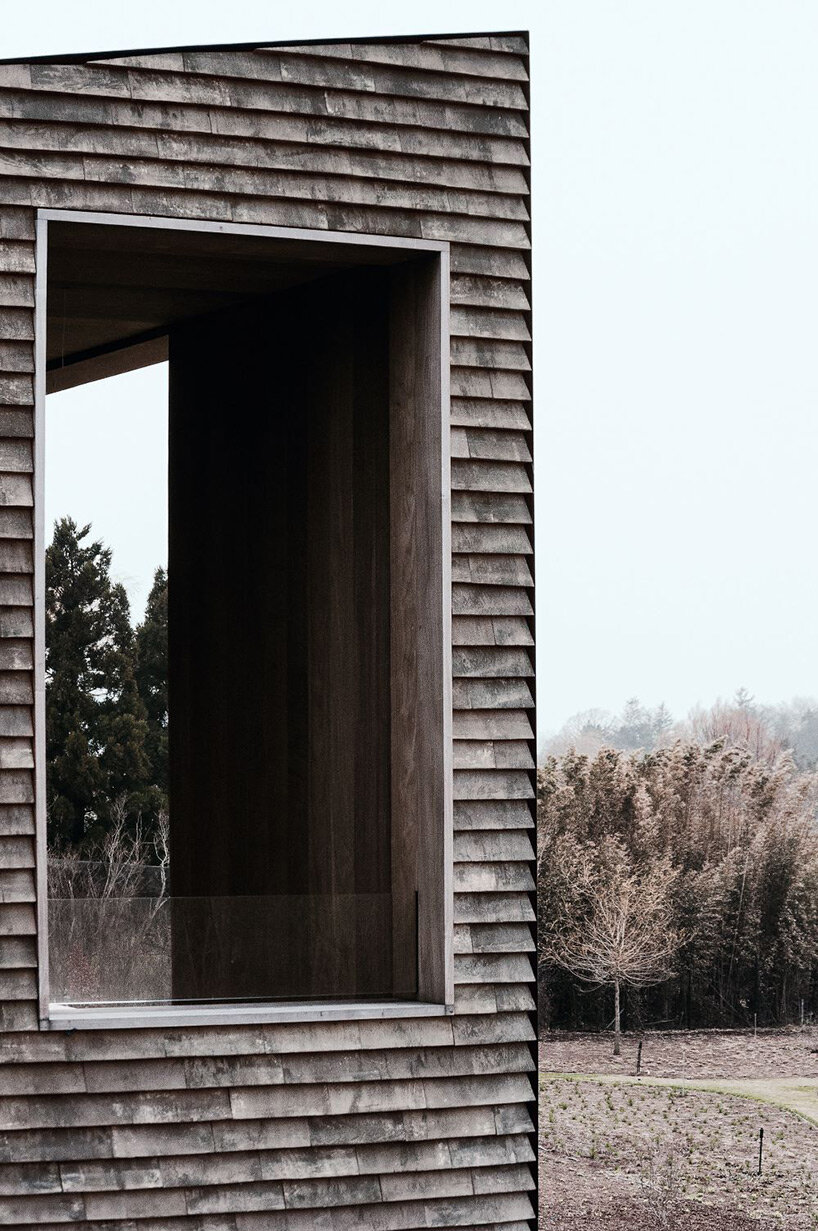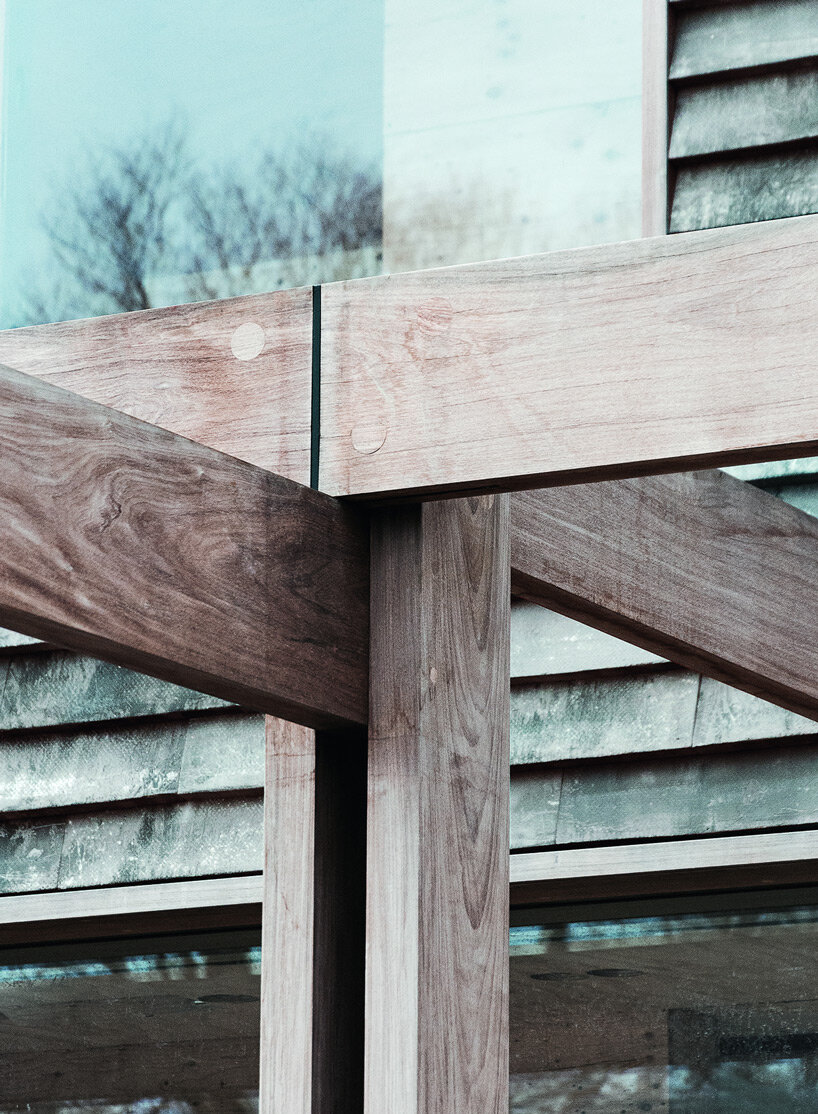Tile-clad Tokyo toilets are drenched in bright green and yellow light
Local studio I IN has renovated two toilets in a Tokyo shopping centre, using lights that “propose new colours for genders” to create vivid interiors.
The interior design studio completely renovated the two toilets, which are located on the restaurant floor of the shopping centre Shin-Marunouchi in Chiyoda City, Tokyo.
It began by wrapping both restrooms in white tiles to give them a clean feel that would also function as an unobtrusive background for the coloured lights.
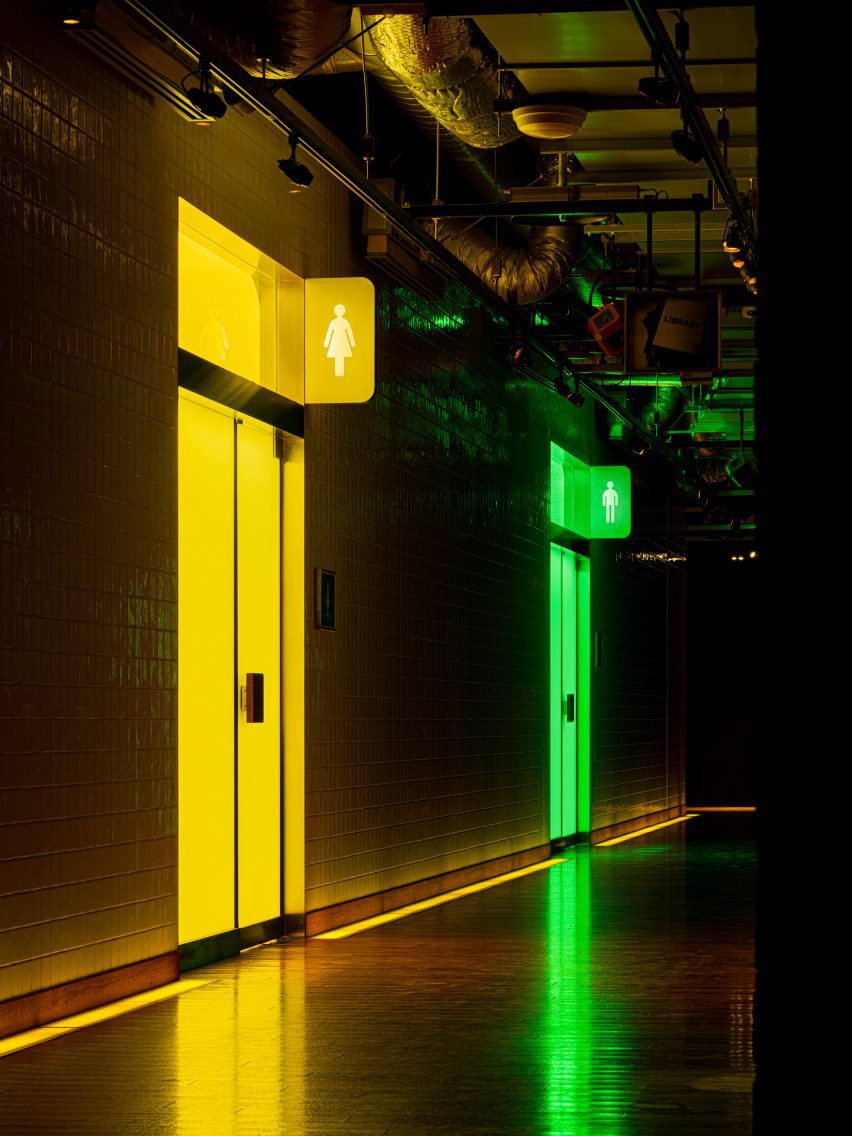
“We used a mosaic tile by Dinaone that is made in the Tajimi area, which is famous for tile-making in Japan, and it has a special non-slip treatment on its surface,” I IN told Dezeen.
“We wrapped the space in tiles to express the feeling of cleanliness; we think public restrooms need to offer a sense of purity so that this whole space can be cleaned easily,” the studio continued.
“Our aim was also to create a continuous floor, wall and ceiling using one material so that people can experience entering an unrealistic space.”
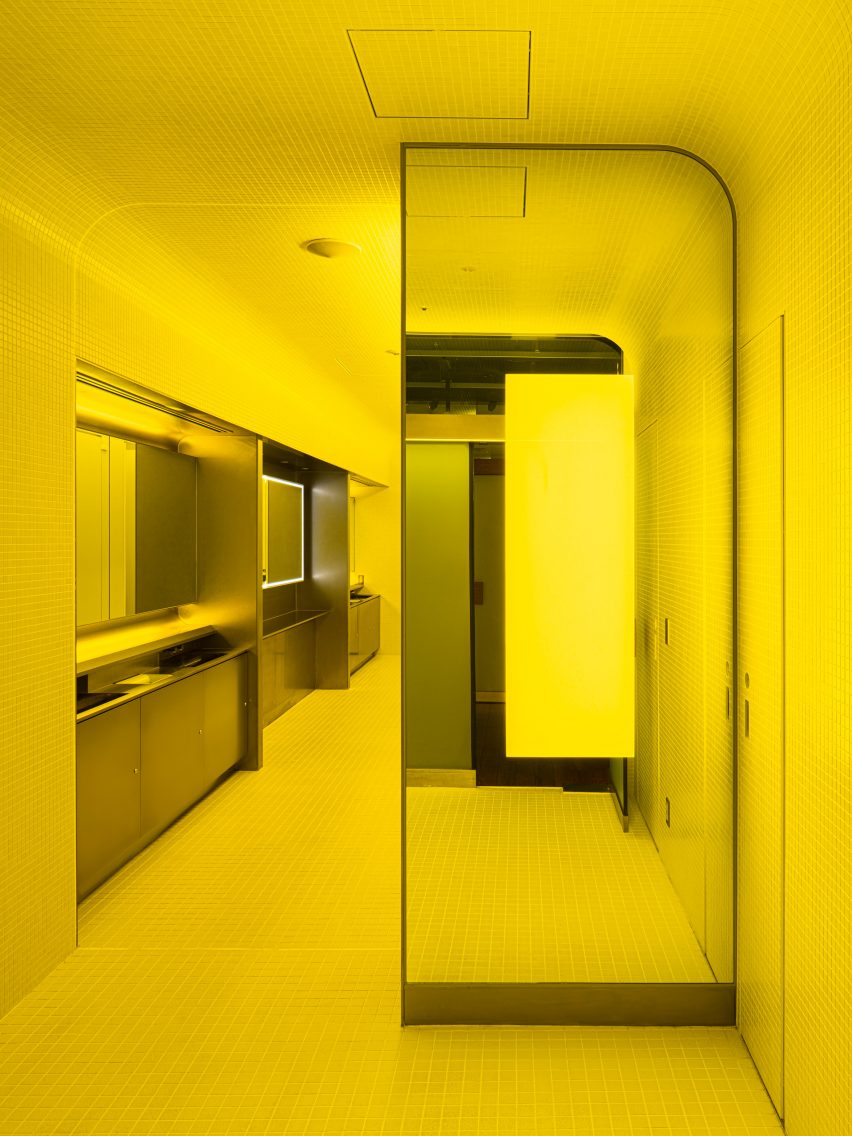
The all-white interior was then enhanced by hidden light fixtures that colour the female bathroom entirely yellow, while the male bathroom is all green.
“The main aim was to propose new colours for genders,” the studio said.
“The universal toilet signage is usually red and blue – we wanted to bring them closer together. In rainbow colours, which define diversity, yellow and green are next to each other.”
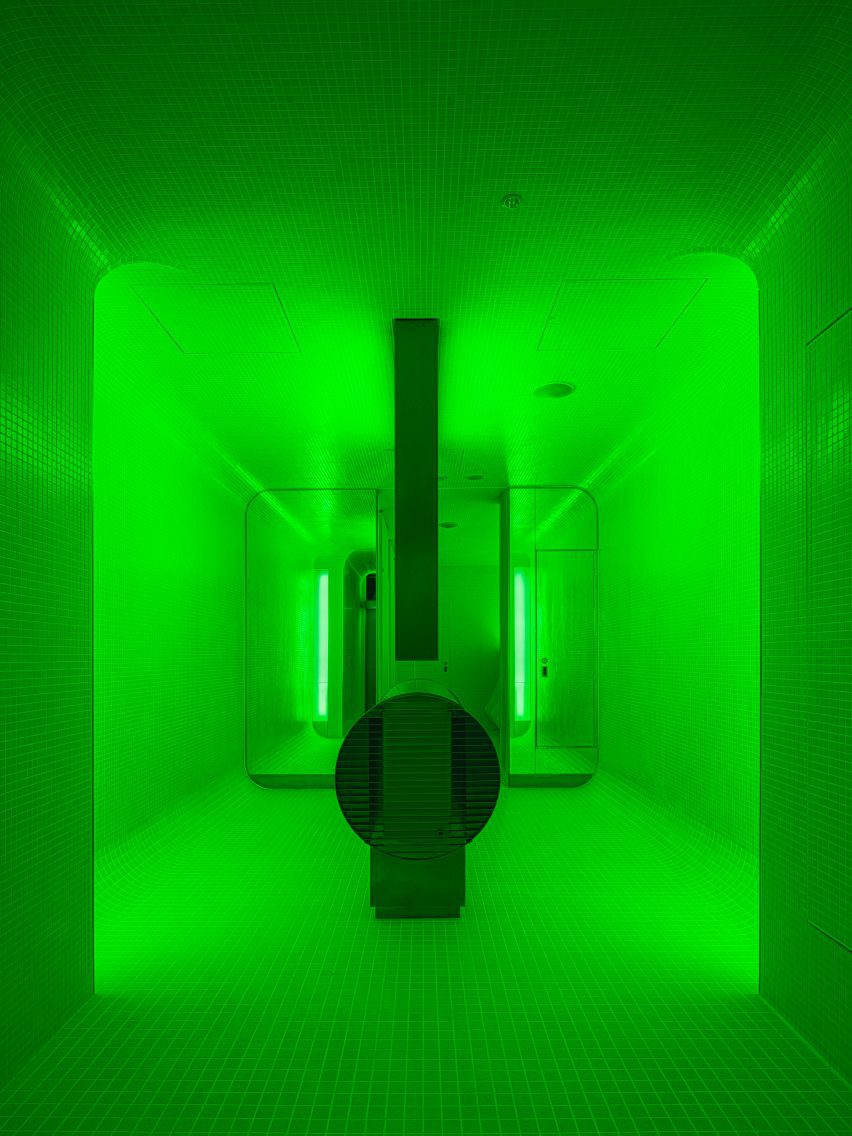
The colours of the toilets can be changed for seasonal events, but will otherwise remain yellow and green.
The studio also designed sinks especially for the toilets, in which almost all the functions are hidden away to help create tidy spaces with a futuristic feel.
“We used silver metal – stainless steel – to create original sink designs for both the women’s and the men’s room,” I IN said.
“Here, you do not see typical equipment such as faucets, soap dispensers and hand dryers; these are designed inside the counters but you can easily find and use them,” it added.
“As the space is all about new restroom experiences, we designed a new experience for washing hands as well.”
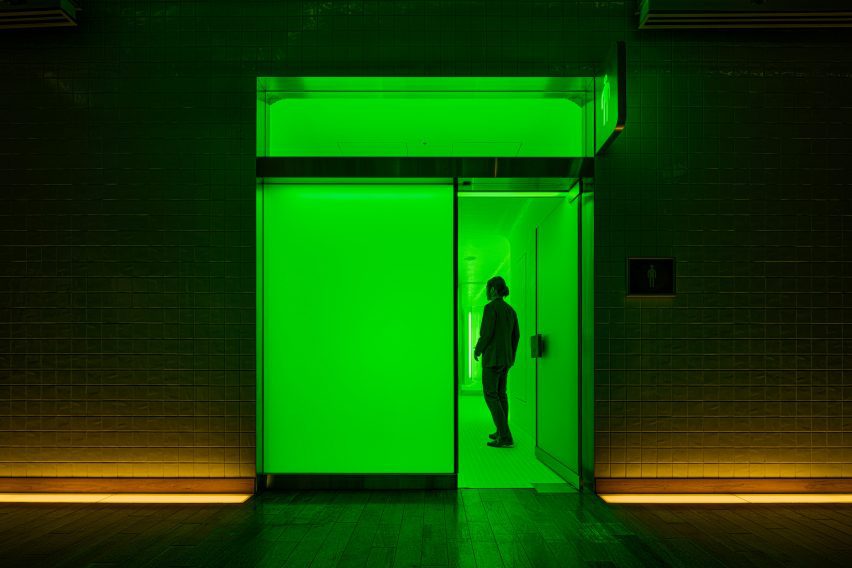
I IN collaborated with architecture and engineering studio Mitsubishi Jisho Design on the design.
The studio hopes that the washrooms will create a memorable experience for visitors.
“The sensation of being saturated by the color of light transforms all elements of the restroom experience into something extraordinary, leaving a powerful lasting impression on the visitor,” the studio concluded.
I IN was longlisted for emerging interior design studio of the year at Dezeen Awards 2022 and has previously overhauled a 1980s apartment in Tokyo to give it an understated luxury feel.
The photography is by Tomooki Kengaku.

